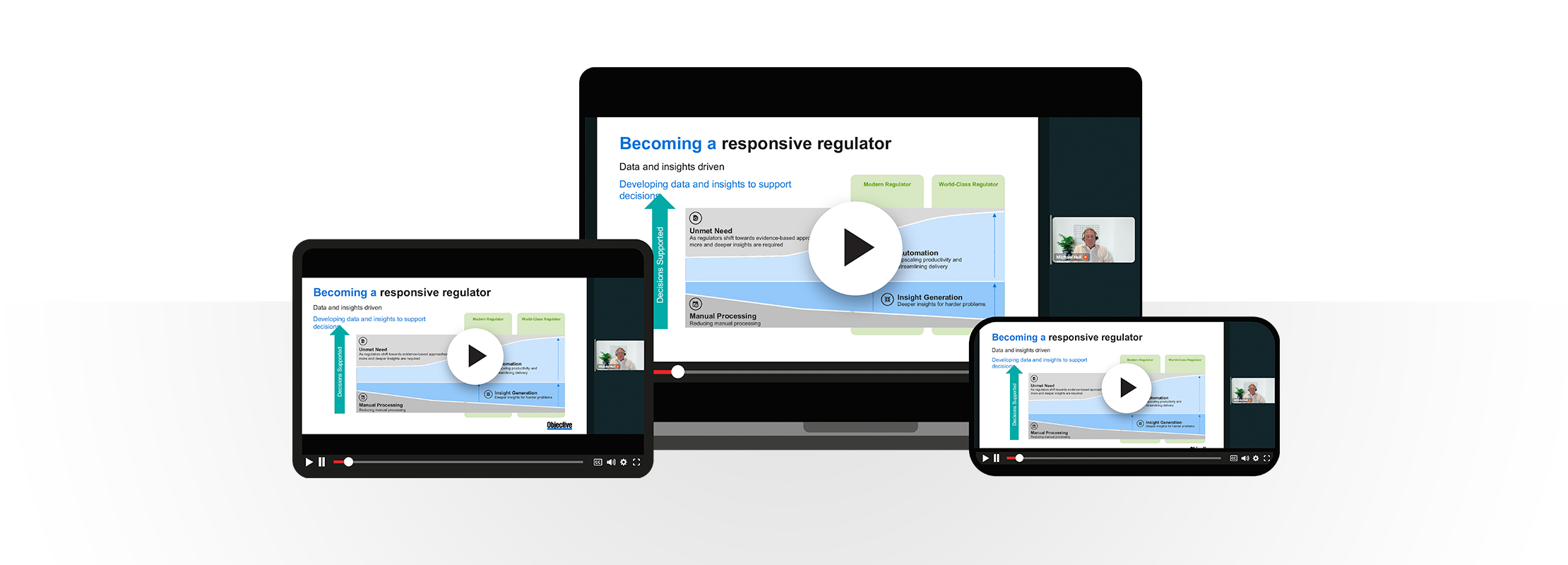
This webinar features John Munro, a Regulatory Practice Specialist with extensive experience designing and leading national data, insights and intelligence functions across government organisations in Australia, New Zealand and the UK.
In this session, John shares a compelling real-life case study on leveraging organisational data to implement intelligence-led regulation, in turn unlocking new opportunities through a multi-disciplinary approach. You can also read John's thoughts in our latest Insight Paper here.
Additionally, the Objective team showcase some key features of Objective RegWorks, demonstrating how it facilitates data-informed regulation, enhances decision-making and harnesses the data held within the organisation.
Highlights include:
Visual Associations: A comprehensive 360-degree view of entities, including their historical and current connections with other organisations, individuals, and locations, alongside detailed contact and case histories.
Risk-Based Analysis: Utilising risk-based algorithms that can be tailored to specific parameters and weightings, enabling the calculation of precise risk ratings.
Offence Management: Easily configurable for changing legislation and penalties, facilitating precise enforcement. Data can be utilised for trendspotting, informing policy changes, and enhancing proactive regulatory approaches.
Dashboards: Providing rich visualisation tools for effective workload management and KPI monitoring. Prioritise tasks, delve into individual records, and generate real-time operational reports from customisable personal dashboards, tailored to working preferences.
Audience Q&A
This section provides John's written responses to all webinar questions.
Q1. What's the difference between intelligence and insights?
In principle, intelligence has a narrow focus compared with insights – delivering a regulator’s strategy is driven by insights and other key factors.
There are some questions that can’t be answered by evidence-based methodologies such as research, evaluation, business intelligence and advanced analytics. This might be due to insufficient resourcing or poor information quality. Intelligence analysis aims to fill this gap – supporting decision-making under uncertainty. Intelligence draws on every available source of information to develop insights. This can include data, but also includes debriefs of staff, industry experts, researchers, workers, and victims, research papers, industry press, transactional records, and information held by other agencies. All these sources are evaluated for reliability and drawn together like pieces of a jigsaw puzzle. Probabilistic language is used to communicate the degree of uncertainty associated with the insights.
Insights are produced by consistently following a process in which information of all forms – from data to personal experience – are collected, processed, and analysed to produce actionable insights: and then used to impact our environment. There are a range of methodologies available that can be used to process information, such as intelligence analysis, advanced analytics, research analysis, and evaluation. The type of methodology best applied to an insights-gap depends on several factors such as the amount of funding available to invest in insights-creation, the degree of certainty required for the decision, and the quality of information available for analysis.
Presenters:
 | John Munro Regulatory Practice Specialist, Objective |
 | Dan Kilgallon Pre-Sales Manager, Objective |
 | Michael Hull Regional Director, Objective |



